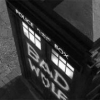Περί φωτογραφικών μηχανών, φακών και λοιπών αξεσουάρ
-
Similar Content
-
Η Leica καταρρίπτει ρεκόρ κερδών με το 2024 να είναι η πιο επιτυχημένη χρονιά στην ιστορία της
By astrolabos,
- 0 comments
- 453 views
-
- 0 comments
- 881 views
-
Η παραγωγή μικρού μεγέθους ψηφιακών φωτογραφικών μηχανών σταματάει, λόγω των κινητών τηλεφώνων 1 2
By astrolabos,
- 14 comments
- 1.580 views
-
- 0 comments
- 2.959 views
-
Η Samsung απενεργοποιεί τις κάμερες στο Galaxy Z Fold 3 αν ξεκλειδωθεί το bootloader
By astrolabos,
- bootloader
- camera
- (και 3 επιπλέον)
- 0 comments
- 1.336 views
-





.thumb.jpg.14a3df6f5853e0ce92219404fd5d940d.jpg)

Recommended Posts